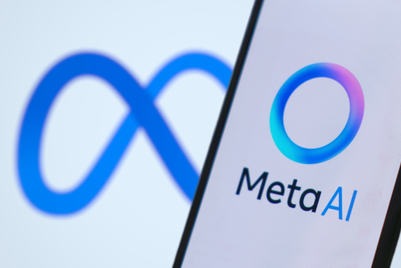.jpg&h=570&w=855&q=100&v=20250320&c=1)
The marketing and advertising industry is undergoing a profound transformation powered by AI. From automated media buying and personalised content delivery to generative creative tools and conversational brand agents, AI has become an integral part of the modern marketing stack. However, as these systems take on increasingly visible and autonomous roles, a critical issue demands attention at the highest levels of leadership: AI safety.
Too often treated as a technical consideration confined to data science or engineering teams, AI safety must now be recognised as a strategic brand priority. When AI generates content, makes real-time decisions, or engages with consumers directly, any failure in alignment, accuracy, or fairness does not merely reflect on the technology—it reflects on the brand.
In this new era, AI safety is brand safety.
Marketers have always been custodians of reputation. But today, AI systems play a central role in shaping how consumers experience and interpret brands. This raises complex new risks:
Generative AI may produce factually incorrect or misleading claims, potentially exposing the organisation to reputational damage, consumer backlash, or regulatory scrutiny.
Automated targeting models may exhibit bias, excluding or unfairly categorising individuals based on gender, ethnicity, or socioeconomic status, eroding trust and violating compliance standards.
AI agents and chatbots may hallucinate, respond inappropriately, or be manipulated through adversarial prompts, directly harming the customer experience.
Without proper controls, AI-driven media placements may result in brand content appearing next to harmful or inappropriate material, undermining years of brand building.
These are not hypothetical scenarios—they are emerging realities for organisations adopting AI tools at scale. The common denominator across all of them is a failure to integrate AI safety principles into marketing operations and brand governance.
Defining AI safety in the marketing context
AI safety, in the context of marketing and advertising, refers to the practices, systems, and governance frameworks that ensure AI-powered tools operate in a manner aligned with the brand’s values, legal obligations, and reputational interests.
This encompasses:
Factual integrity: Ensuring that generative systems do not produce false or misleading claims.
Fairness and inclusivity: Auditing algorithms to prevent discriminatory outcomes in audience segmentation or creative delivery.
Robustness and reliability: Minimising the risk of inappropriate outputs or behavioural drift across channels and use cases.
Explainability and accountability: Maintaining oversight over how AI systems reach conclusions, particularly in high-impact consumer interactions.
Human oversight: Embedding clear escalation paths and human-in-the-loop review in sensitive or public-facing outputs.
These dimensions are not simply ethical considerations—they are fundamental to protecting brand trust and commercial viability in a market increasingly sceptical of opaque automation.
AI governance as a brand discipline
To manage these risks effectively, leading organisations are integrating AI governance into their brand and marketing management functions. This includes:
- Developing internal policies and guidelines for the responsible use of AI in content creation, media buying, personalisation, and customer engagement.
- Establishing cross-functional AI oversight committees with representation from marketing, legal, compliance, data science, and brand leadership.
- Training marketers and agency partners on the capabilities and limitations of AI tools—including prompt engineering best practices, red-flag detection, and ethical review protocols.
- Implementing pre-deployment testing procedures, such as red teaming, bias detection, and hallucination audits, before launching AI-powered campaigns at scale.
These actions position AI safety not as a constraint but as a discipline—one that enables scalable, responsible innovation. It ensures that marketing automation and personalisation efforts do not compromise the very brand equity they aim to amplify.
Anticipating regulatory and public expectations
Globally, regulatory bodies are beginning to scrutinise the deployment of AI across sectors, and marketing will not be exempt. The European Union’s AI Act, the US Executive Order on Artificial Intelligence, and Singapore’s AI Verify initiative signal a shift towards mandatory transparency, fairness, and accountability in AI systems.
Rising consumer expectations are equally important. Today’s consumers are increasingly sensitive to how their data is used, how content is personalised, and how brands engage with automation. Trust is no longer a secondary factor—it is central to loyalty, advocacy, and lifetime value.
For marketing leaders, the message is clear: Responsible AI use is no longer optional—it is a core expectation from regulators, partners, and the public.
To align AI adoption with brand safety objectives, marketing executives should take the following actions:
- Conduct a comprehensive audit of where and how AI is being used across marketing and advertising workflows.
- Establish brand-specific AI usage guidelines, particularly for generative systems, personalisation tools, and autonomous engagement platforms.
- Implement layered safeguards, including human-in-the-loop review, grounding mechanisms for generative content, and prompt engineering standards.
- Collaborate with compliance and legal teams to align AI deployments with emerging regulatory frameworks and ethical benchmarks.
- Foster a culture of responsible experimentation, where innovation is pursued with clear accountability and risk awareness.
At the end of the day, this is about ethics as much as it is about safeguarding your brand’s trust and long-term success in a world that’s becoming increasingly wary of black-box automation.
AI is changing marketing in big ways, let’s be honest: in today’s world, AI safety isn’t just a nice-to-have. It is brand safety.
Lionel Sim is founder of AI agency Capitol. He was the former global CCO for Livewire and head of commercial for Bondee.


.jpg&h=334&w=500&q=100&v=20250320&c=1)
.jpg&h=334&w=500&q=100&v=20250320&c=1)

.jpg&h=334&w=500&q=100&v=20250320&c=1)
.png&h=334&w=500&q=100&v=20250320&c=1)
.png&h=334&w=500&q=100&v=20250320&c=1)







.jpg&h=268&w=401&q=100&v=20250320&c=1)

.jpg&h=268&w=401&q=100&v=20250320&c=1)

.png&h=268&w=401&q=100&v=20250320&c=1)